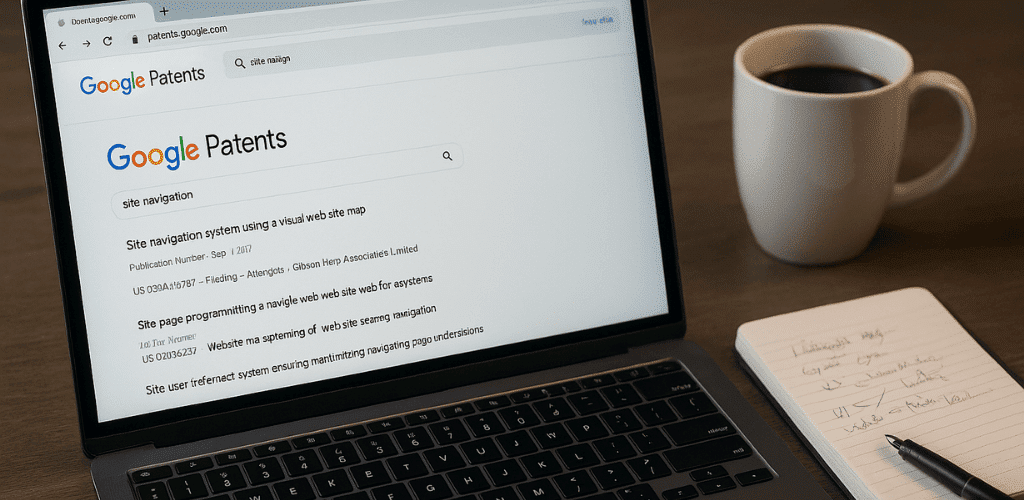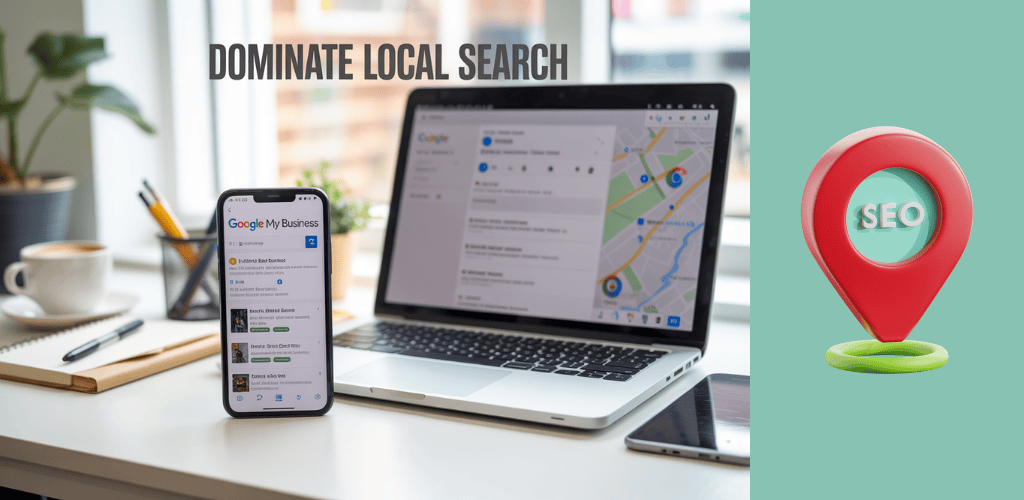Are you a small business owner wondering how much does a website cost for a small business? You’re not alone. In today’s digital age, having an online presence is crucial, but the costs can seem overwhelming. From domain names and hosting to design and functionality, the expenses can quickly add up.
The truth is, website costs for small businesses can vary dramatically. In 2025, you might spend anywhere from $1,000 to a whopping $48,000! But don’t let these numbers scare you off. Whether you’re considering a DIY approach or hiring professionals, there are options for every budget. The key is understanding what factors influence the cost and how to make smart choices for your business.
In this blog post, we’ll break down the essential components of website costs, explore the pros and cons of DIY versus professional creation, and uncover some hidden expenses you might not have considered. We’ll also share strategies to help you reduce costs without sacrificing quality. By the end, you’ll have a clear understanding of what to expect and how to plan for your small business website investment.
Table of Contents
Understanding How Much Does A Website Cost For A Small Business
A. Average cost range: $1,000 to $48,000
The cost of creating a website for a small business can vary significantly, typically ranging from $1,000 to $48,000. This wide range reflects the diverse needs and complexities of different businesses. Here’s a breakdown of some common cost components:
| Component | Cost Range |
|---|---|
| Domain Name | $0.99 – $60/year |
| Website Hosting | $10 – $200/month |
| SSL Certificate | Up to $1,500/year |
| Design | $2,000 – $15,000 |
| Number of Pages | $1,000 – $10,000 |
| Functionality | $5,000 – $10,000 |
| CMS | $3,000 – $10,000 |
B. Factors influencing costs: size, features, and complexity
Several factors contribute to the overall cost of a small business website:
- Size: The number of pages directly impacts the cost, with pricing often structured in tiers.
- Features: Advanced functionalities like e-commerce capabilities can significantly increase expenses.
- Complexity: Custom designs and intricate layouts require more time and expertise, driving up costs.
- Hosting type: Shared hosting is more affordable for small businesses, typically costing $10-$20 per month.
- Security needs: SSL certificates, while optional, are highly recommended and can add to the overall cost.
C. Importance of investing in a website for business growth
Investing in a quality website is crucial for small businesses in the digital age:
- Increases online visibility
- Builds customer trust
- Drives sales and conversions
- Serves as a digital business card
- Enables potential customers to research before purchasing
A compelling online presence is vital for attracting and retaining customers in today’s digital marketplace. While the initial investment may seem substantial, the potential returns in terms of business growth and customer engagement make it a worthwhile expense.
Now that we have covered the general understanding of website costs for small businesses, let’s delve deeper into the essential components that make up these costs in the next section.
Essential Components of Website Costs
Now that we’ve explored the importance of understanding website costs for small businesses, let’s delve into the essential components that make up these expenses. These core elements form the foundation of any website and significantly impact the overall cost.
Domain Name Registration and Renewal
A domain name is your website’s unique address on the internet. Costs for domain names can vary widely:
- Annual registration fees: $10 to $60
- Renewal costs: Similar to initial registration
- Premium domain names: Can cost thousands of dollars
Website Hosting Options and Pricing
Hosting is crucial for keeping your site accessible online. Options include:
| Hosting Type | Price Range (Monthly) | Best For |
|---|---|---|
| Shared | $3 – $25 | Small businesses, low traffic |
| VPS | $20 – $100 | Growing businesses, moderate traffic |
| Dedicated | $100 – $250+ | Large businesses, high traffic |
SSL Certificates for Security
SSL certificates like these encrypt data and build trust with visitors:
- Free certificates: Often included with hosting plans
- Paid certificates: $50 to $150+ annually, depending on features
Design and Development Expenses
This often represents the largest portion of website costs:
- Template-based designs: $0 to $1,000+
- Custom designs: $5,000 to $30,000+
- E-commerce functionality: Additional $15 to $30 monthly
- Plugins/apps: Free to $100+ per month
Factors affecting design and development costs:
- Complexity of features
- Number of pages
- Custom graphics and photography
- Developer location (U.S. rates: up to $250/hour; India rates: $10-$30/hour)
Remember, while these components form the core of website expenses, additional costs may arise for maintenance, marketing, and ongoing updates. With this breakdown in mind, next, we’ll explore the pros and cons of DIY website creation versus hiring professionals, helping you make an informed decision for your small business.
DIY vs. Professional Website Creation

Now that we’ve covered the essential components of website costs, let’s explore the critical decision between DIY and professional website creation for small businesses.
Pros and cons of building your own website
DIY website builders like Wix, Squarespace, and Weebly offer seemingly quick and easy solutions for creating a website. However, there are important considerations:
Pros:
- Lower initial costs (typically under $10 per month)
- User-friendly interfaces with drag-and-drop functionality
- Suitable for simple brochure-style sites
Cons:
- Time-consuming process, often taking longer than expected
- Limited customization options
- Potential technical challenges for non-experts
- Hidden costs for premium features and upgrades
| Aspect | DIY Website | Professional Website |
|---|---|---|
| Initial Cost | $500 – $1,500 | $1,500 – $6,000 |
| Ongoing Costs | $100 – $300/year | $300 – $600/year |
| Time Investment | 50 – 100 hours | Minimal |
| Potential Revenue Loss | $5,000 – $20,000/year | Negligible |
| ROI | Poor long-term | Positive within 3-6 months |
Benefits of hiring a professional web designer
Professional web development offers several advantages:
- Expertise: Skilled developers create trust-building designs aligned with business goals
- Time-saving: Allows business owners to focus on core activities
- Technical proficiency: Eliminates common issues and ensures better performance
- Scalability: Provides a foundation for future growth and updates
- Credibility: Enhances brand image with a polished, professional look
Considerations when choosing between DIY and professional services
When deciding between DIY and professional website creation, consider:
- Budget: Assess initial and long-term costs against potential returns
- Time availability: Evaluate the opportunity cost of DIY efforts
- Technical skills: Determine your comfort level with web technologies
- Website complexity: Match the solution to your business needs (e.g., brochure site vs. e-commerce platform)
- Business goals: Consider how the website will contribute to revenue generation
For businesses generating less than 20% of revenue online, a simple DIY site may suffice. However, if your website is crucial for lead generation or e-commerce, professional development is advisable.
With this understanding of DIY vs. professional website creation, we’ll next explore additional features and their associated costs to help you make an informed decision for your small business website.
Additional Features and Their Costs
Now that we’ve explored the differences between DIY and professional website creation, let’s delve into the additional features that can enhance your small business website and their associated costs.
A. E-commerce functionality and integration
E-commerce capabilities are crucial for businesses looking to sell products or services online. Integrating e-commerce functionality typically involves:
- Online store setup
- Inventory management
- Shipping and accounting tools
Costs for e-commerce integration can vary depending on the platform and complexity of your needs. For instance, Squarespace offers built-in e-commerce solutions with their website packages, while other platforms may require additional plugins or extensions.
| E-commerce Feature | Estimated Cost Range |
|---|---|
| Basic online store | $20 – $50 / month |
| Advanced inventory management | $30 – $100 / month |
| Shipping integrations | $10 – $50 / month |
B. Plugins and apps for enhanced functionality
To expand your website’s capabilities, you may need various plugins or apps. These can include:
- Marketing tools (email campaigns, SEO resources)
- Communication features (chat, forms, testimonials)
- Booking and scheduling systems
Squarespace Extensions and similar third-party tools can streamline processes like shipping, marketing, and sales. However, it’s important to consider:
- Pricing varies by provider
- Support is often managed by the extension developer
- Always review terms and ensure trust in third-party services
C. Custom images vs. stock photos
Visual content is essential for engaging website visitors. You have two main options:
- Custom images:
- Unique to your brand
- Higher initial cost
- May require professional photography services
- Unique to your brand
- Stock photos:
- More affordable
- Easily accessible
- Less personalized
- More affordable
When budgeting for visuals, consider the long-term impact on your brand identity and the potential need for regular updates to keep your site fresh.
With these additional features in mind, it’s important to be aware of potential hidden costs and long-term expenses that may arise as you maintain and grow your small business website.
Hidden Costs and Long-term Expenses
Now that we’ve explored the additional features and their associated costs, it’s crucial to understand the hidden costs and long-term expenses that come with maintaining a small business website. These often-overlooked aspects can significantly impact your overall budget.
A. Website maintenance and updates
Regular maintenance and updates are essential for keeping your website secure, functional, and up-to-date. These ongoing costs can range from $500 to $5,000 annually, depending on the complexity of your site. Here’s a breakdown of potential maintenance expenses:
| Maintenance Task | Estimated Annual Cost |
|---|---|
| Security updates | $200 – $1,000 |
| Content management | $300 – $2,000 |
| Plugin/app updates | $100 – $500 |
| Technical support | $200 – $1,500 |
To minimize these costs, consider opting for managed hosting, where the provider handles many technical tasks, freeing you from these responsibilities.
B. Marketing and SEO services
Ensuring your website is visible to potential customers often requires ongoing marketing and SEO efforts. These services can vary widely in cost:
- Basic SEO optimization: $100 – $500 per month
- Comprehensive SEO campaigns: $500 – $5,000+ per month
- Online advertising: $100 – $1,000+ per month
While these costs may seem high, they are crucial for driving traffic to your site and generating leads for your business.
C. Business email setup and management
A professional business email enhances credibility and security. Costs for email services can include:
- Initial setup: $50 – $200
- Monthly management: $5 – $50 per user
- Additional security features: $10 – $30 per month
When budgeting for your website, it’s essential to factor in these hidden costs to avoid unexpected expenses down the line. With this comprehensive understanding of website expenses, we’ll next explore strategies for cost reduction to help you maximize your investment while maintaining a high-quality online presence.
Strategies for Cost Reduction
Now that we’ve explored the hidden costs and long-term expenses associated with small business websites, let’s dive into strategies for reducing these costs without compromising on quality or functionality.
Utilizing templates and website builders
Small businesses can significantly cut down on website development costs by leveraging pre-designed templates and user-friendly website builders. These tools offer a balance between affordability and professional appearance:
- Templates: Customizing premium templates can provide a polished look at a fraction of the cost of custom design.
- Website Builders: Platforms like HubSpot’s Free Website Builder offer intuitive drag-and-drop interfaces, eliminating the need for coding skills.
| Website Builder Benefits | Cost-Saving Impact |
|---|---|
| No coding required | Reduces development time and costs |
| Pre-designed elements | Eliminates need for custom design |
| Scalability options | Allows for growth without major redesigns |
Leveraging discounts and promotions
To further reduce costs, small businesses should keep an eye out for:
- Seasonal sales on web hosting services
- Bundle deals for domain registration and hosting
- Promotional offers on premium templates or plugins
Many service providers offer special rates for small businesses or startups, which can lead to substantial savings over time.
Prioritizing essential features for initial launch
A strategic approach to website development involves focusing on core functionalities at launch and adding features incrementally:
- Identify must-have features that directly support business goals
- Implement a minimalist design that’s easy to maintain and scale
- Utilize open-source tools like WordPress and GIMP for content management and image editing
By prioritizing essential features, businesses can:
- Reduce initial development costs
- Launch faster and start generating revenue sooner
- Test market response before investing in advanced functionalities
Remember to consider scalability from the outset. Opting for a microservices architecture can allow for more flexible growth and cost management as your business expands. This approach enables you to add or upgrade individual components without overhauling the entire website, potentially saving significant costs in the long run.
Creating a website for a small business involves various components and considerations, each impacting the overall cost. From essential elements like domain names and hosting to more complex features such as e-commerce functionality and custom designs, the price range can vary significantly. While DIY options offer cost-effective solutions for those with some technical knowledge, professional services provide expertise and time-saving benefits for busy entrepreneurs.
Ultimately, the investment in a well-designed website is crucial for small businesses in today’s digital landscape. It enhances online visibility, builds customer trust, and drives sales. Whether opting for a basic informational site or a complex interactive platform, careful planning and strategic decision-making can help minimize expenses while maximizing the impact of your online presence. Remember to consider long-term costs and hidden expenses when budgeting for your website, ensuring a sustainable and effective digital strategy for your small business.








I have been surfing online over 3 hours today, yet I never found any captivating content like
yours. It is quite worth sufficient for me. In my opinion, if all site owners and bloggers made good content as you did, the net will be a lot more useful than ever before.|
I couldn’t resist commenting. Perfectly written!|
I will right away seize your RSS feed as I can’t
to find your email subscription link or newsletter service.
Do you’ve any? Kindly allow me know in order that I could subscribe.
Thanks.|
It is perfect time to make some plans for the future and it is time
to be happy. I have read this put up and if I could I
desire to suggest you some fascinating issues or tips.
Perhaps you could write next articles regarding this article.
I want to read more things approximately it!|
I have been surfing online more than three hours nowadays, yet I never
discovered any fascinating article like yours. It’s pretty worth
enough for me. In my opinion, if all webmasters and bloggers made good
content as you probably did, the net will probably be much more useful than ever before.|
Ahaa, its nice conversation on the topic of this piece of writing at this place at this blog, I have read all that, so at
this time me also commenting here.|
I am sure this paragraph has touched all the internet users, its really pleasant piece of writing
on building up new weblog.|
Wow, this paragraph is fastidious, my sister is analyzing these
things, so I am going to tell her.|
bookmarked!!, I really like your site!}|
Way cool! Some very valid points! I appreciate you penning this article plus the rest of the site
is also very good.|
Hi, I do believe this is a great website. I stumbledupon it 😉 I’m going
to return yet again since I book marked it. Money and freedom is the best way to change, may you be rich and continue to
help others.|
Woah! I’m really enjoying the template/theme of this website.
It’s simple, yet effective. A lot of times it’s hard to get that “perfect balance” between superb usability and visual appeal.
I must say that you’ve done a amazing job with this. In addition, the
blog loads super fast for me on Firefox. Superb Blog!|
These are actually wonderful ideas in on the topic of blogging.
You have touched some fastidious things here.
Any way keep up writing.|
I love what you guys are usually up too. This kind of clever work and exposure!
Keep up the very good works guys I’ve you guys to my own blogroll.|
Hello! Someone in my Myspace group shared this site with us so
I came to look it over. I’m definitely loving the information. I’m
bookmarking and will be tweeting this to my followers!
Terrific blog and fantastic design.}|
I like what you guys tend to be up too. Such clever
work and coverage! Keep up the very good works guys I’ve included you guys to
my blogroll.|
Hey would you mind stating which blog platform you’re
working with? I’m going to start my own blog in the near
future but I’m having a difficult time choosing between BlogEngine/Wordpress/B2evolution and Drupal.
The reason I ask is because your layout seems different then most blogs
and I’m looking for something completely unique.
P.S Apologies for {getting|